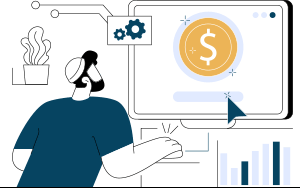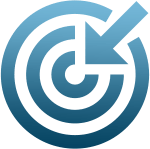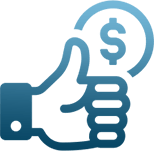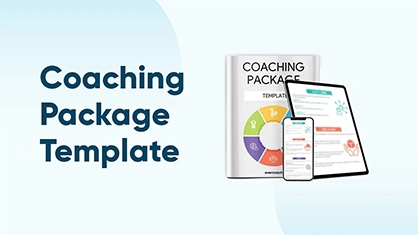The ultimate guide to coaching prices & Packages

Featured Articles
- 1Strategies For Coaching Prices And Fees
- 2How To Price Coaching Packages Like A Pro
- 3How To Select The Right Pricing Model
- 4Types Of Coaching Packages
- 5How To Craft Irresistible Coaching Packages: A Comprehensive Guide
- 6The DSP Framework
- 7Coaching Packages Template & Examples
- 8start crafting your coaching packages
If there’s one thing coaches fear more than selling their coaching packages, it’s setting their coaching prices because - let’s face it - if you don’t believe in your worth, your potential clients won’t either.
Here’s the hard truth: coaching isn't just about transforming lives; it's about communicating value.
Every time you set a price, you're telling a story.
It's about who you are, your worth, and how much you believe in what you offer.
But reaching the sweet spot can be confusing, overwhelming, and flat-out terrifying.
Undercharge and you're under the radar. Overcharge and you're… well, overboard.
So, how do you set coaching prices and create packages that are just right for your ideal clients?
Let’s dive in!
strategies for coaching prices and fees
Let’s start with how you can price your services and grow your business smartly.
pricing categories
When we talk about prices, we’re looking at three major leagues:
hourly rate
Picture this: your client pops in, gets an hour of wisdom and transformation, and pops out—leaving you with a neat sum for that hour. Sounds simple, right? It's the classic choice, especially if you're just starting out.
Hourly rates make things easy-peasy. But heads up, this strategy can limit your growth in the long run.
value rate
Here’s where things get a tad complex. Instead of a flat per-hour rate, your price reflects the incredible value you bring. Think of a business coach whose guidance helps a startup rake in a cool million. Their fee? A fraction of that million.
This isn’t about the hours you put in; it's about the massive results you deliver.
We will discuss this in detail in Chapter 2.
retainer rate
For those dreaming of steady income streams, this one’s for you. Picture a client reserving your genius for a long-term gig.
It's like having a regular paycheck without the nail-biting unpredictability of not knowing where the next payment will come from.
pricing factors
Got your category down? Awesome! Let's tweak those numbers for perfection with some killer pricing factors:
pricing factor #1: monthly goals
Start with your dream monthly income. You know, the one that gets you that comfy life. Got it?
Now, reverse engineer. How many clients at what rate to hit that sweet number? Do the math, align with your values, and balance with the hours you’re willing to put in.
pricing factor #2: know your audience
Quick reality check: A corporate honcho might have deeper pockets than a fresh-out-of-college newbie. Dive into some detective work.
Peek into what other coaches, both rookies and the big shots, are charging. This will give you the low-down on what potential clients might be ready to shell out.
pricing factor #3: wear your experience on your sleeve
Being the go-to expert in your niche? Priceless! The big names can command the big bucks. Just starting? No worries. Everyone starts somewhere.
Hone your skills, collect those testimonials, and soon enough, you'll be the one setting premium rates.
pricing factor #4: location, location, location
Okay, in this digital age, you might wonder, "Does location even matter anymore?" Well, sort of. Living costs differ from New York to Nebraska.
While the online world has blurred boundaries, clients from posh cities might still be more open to splurging than those from laid-back towns.
Alright, future coaching superstar, with these strategies in hand, you're set to price like a pro!
Let’s make it rain.
how to price coaching packages like a pro
Have you ever wondered why coaches struggle with pricing their coaching packages?
A lot of the time, it happens because of one fundamental reason, and that reason is because we associate the price of our package with our self-worth.
At some point, we ask ourselves, "Am I worth getting that much money for that service?"

And because of this, it becomes incredibly hard for a coach to be able to fairly and confidently price themselves.
So, how does one price their package?
tip #1 price based on results
Firstly, let's shed the age-old notion of hourly rates.
Your expertise shouldn't boil down to mere clocked hours. Instead, think of the tangible results you offer. The return on investment (ROI) your clients get? That's your ticket to pricing.
Start pricing based on the impact that you drive for your client.
Imagine you're a business coach. You guide a company to earn an extra $1 million. Now, charging only 10% of that added revenue doesn’t sound too much anymore, right? Express it this way: “You invest $10,000 with me, and I'll help drive $1 million to your business. Not just for a year but for years to come.”
The same goes for health or life coaches. Equate the results to real-world benefits. How does achieving their health or life goals impact their overall life and well-being?
For example, imagine your client wants to lose weight. What's the true significance of shedding those pounds? Is it increased productivity at work, leading to a potential promotion? Is it more vitality and well-being that increases their happiness? Is it increased confidence and its impact on their relationships and careers?
No matter what coaching specialty you have, you can create an ROI model that directly correlates to the outcome that your client is getting.
In simple terms, find an ROI that actually translates to their life.
Remember, it's all about connecting the dots between physical results and real-world impact.
tip #2 - calculate your hourly rate
What's your ideal annual income? Think of that number and divide it by 12 to get your monthly income rate.
Now, decide how many hours you wish to work in a month. Divide, and voilà – you've got your hourly rate.
Knowing this rate aids in targeting your ideal clientele. Perhaps you realize your services align better with a niche market that values and can afford your expertise. This clarity is pure gold!
Also, know this: Money is drawn to the power of intent.
This means when you assertively declare that you want to earn a specific sum this year and actively work towards it, you're setting the stage for success.
This has a stronger impact than wavering or approaching it with uncertainty.
tip #3: set your baseline
Let's be honest. Starting out, some coaches practically give away their services.
While the intention is commendable, it's a no-win. Because clients who pay peanuts often lack commitment as they don’t have enough skin in the game.
This isn’t about your coaching chops, but their vested interest.
So, a quick benchmark.
Life and health coaches, your packages shouldn’t dip below $1,500. Business and high-performance coaches shouldn’t charge less than $3,000 for three months.
These figures aren't arbitrary but based on the tremendous value you provide.
tip #4: practice before you pitch
Lastly, confidence is key.
When you quote your price, believe in it. If you waver, your client senses that uncertainty.
So, before facing the real world, practice. Rehearse your pitch, stand before a mirror, rope in a friend, or even record yourself.
The aim? Absolute conviction in your offer and price.
coaching pricing guide
Coaching Niche | Salary Range | Average Salary | Average Hourly Rate | Top Hourly Rate | Citation |
|---|---|---|---|---|---|
Life Coach | $27,019 - $210,933 | $61,900 | $31 | $98 | ICF Global Coaching Study & PayScale |
Health Coach | $50,000 - $100,000 | Data not provided | $20 | $40 | US Department of Labor & PayScale |
Executive Coach | $77,000 - $180,000 | $98,000 | $250 | Data not provided | PayScale |
Career Coach | $33,000 - $98,000 | $44,000 | $25 | $98 | PayScale & ICF |
Business Coach | $37,000 - $104,000 | $70,400 | $40 | $75 | PayScale |
*Note: The above benchmarks are relevant to the United States market and similar economies. You might need to adjust depending on where you or your ideal clients live.
how to select the right pricing model
By now, you're well aware that charging by the hour isn't the golden ticket to a thriving coaching business.
It's the quicksand pulling you into a pit of limited earning potential. But don't worry.
Let’s decode how to choose a model that fits you perfectly, brings in the bucks, and most importantly, adds value to your clients.
1. know your worth, but know your market
First and foremost, value your expertise.
Don't undersell yourself.
Remember, setting prices isn't just about what you think you're worth.
Dive deep into market research. Check out your competitors.
What's the average rate for coaches in your niche? What value-add do they offer for those prices?
2. mind the time
Time is money and, unfortunately, neither of them grow on trees.
How many hours can you realistically dedicate to coaching per week? Being 100% booked doesn’t equate to success.
Individual coaching essentially employs the “dollars for hours” model.
You charge for the hours you actively coach. It sounds straightforward, but it has its limitations.
After all, there are only so many hours in a day! Factor in personal time, breaks, and other life necessities, and the number of hours you can dedicate solely to coaching shrinks considerably.
Leave room for life, growth, and self-care.
3. think long-term client relationships
Continuous packages or subscriptions often yield loyal clients.
It's six times more expensive to attract a new client than it is to retain an existing one.
So, consider offering continuous packages that provide ongoing value.
This guarantees revenue plus a more profound, more transformational coaching experience for your clients.
4. your living costs matter
Here’s some straight talk: Calculate your monthly expenses.
Got that number? Now, aim to cover that and then some.
Your pricing should not only reflect your expertise and market value but should also sustain your lifestyle.
You’re in this for passion, sure, but also for a livelihood.
5. test and tweak
Not getting bites at your current price point?
Or maybe clients are rolling in a tad too easily?
Don’t be afraid to adjust. Most established coaches adjust their rates in their first year.
It’s not failure; it’s evolution.
6. balance life and coaching
And now, a heart-to-heart moment.
Coaching is not just your job. It’s a calling.
But just as you’d advise your clients, balance is key.
Don't become the coach who preaches self-care but works 80 hours a week.
By choosing a pricing model that aligns with your desired work-life balance, you bring authenticity to your role.
With a mix of self-awareness, market knowledge, and continuous adaptation, you can create a model that doesn’t just pay the bills but fuels a purpose-driven, sustainable, and enjoyable coaching journey.
types of coaching packages
Let's kick things off with a real-world scenario.
Say you're a foodie searching for a health coach.
Coach A keeps it vague: "I help people shed excess weight."
Meanwhile, Coach B paints a vibrant picture: "Want to shed those pounds, sleep like a baby, feel energetic, and rock those jeans in half a year?"
Who'd you pick? A no-brainer, right? That’s Coach B for the win.
This simple comparison lays bare the potency of well-defined coaching packages. They:
But here’s the thing: there’s no one-size-fits-all when it comes to packages.
However, two tried-and-tested frameworks stand tall. Let’s dissect them:
An SRP is like a sniper’s aim: pinpointed and time-bound.
You promise one transformational result within a clear timeframe.
Say you're a business coach. An SRP offer could be: "Boost your brand's visibility by 15% in 60 days."
The allure of SRPs? Their specificity.

They often command higher prices due to their targeted approach.
Here’s where we enter the marathon zone.
CRPs are expansive, offering ongoing assistance as clients grow.
A business coach might pledge: "Elevate customer base and revenue over 12 magical months."
This broader, holistic approach lasts longer, typically spanning several months, if not a year.
So, how do you choose between “Single Result” and “Continuous Result” coaching packages?

Contrary to what many might suggest, there’s no “right” choice, and your niche doesn’t chain you to a specific package type.
Experiment, iterate, and refine based on feedback and personal preferences.
Reflect on your coaching style.
If you’re a stickler for structure, SRPs could be your jam. On the flip side, if you love to adapt as you go, leaning into CRPs might be more rewarding.
However, let's toss in a wild card.
Why not “mix and match”? Begin with an SRP, delivering that quick win, then transition your client to a CRP for sustained growth. This approach can be golden. It not only displays flexibility but also signals to clients that you're committed to scaling their journey.
Crafting coaching packages isn’t rocket science, but it does require strategy.
Understand your client's needs, assess your strengths, and select the most appropriate coaching package structure for your business.
A tailored approach, combined with a dash of creativity, can make your coaching services the toast of the town!
how to craft irresistible coaching packages: a comprehensive guide
How do you curate coaching packages that not only resonate with potential clients, but ensure they keep coming back for more?
If you’ve ever found yourself in a situation where each coaching session feels like a separate transaction, then you're familiar with the anxiety of wondering when, or even if, a client will return for another session.
Does it seem like you're stuck in a cycle, unable to fully transition into a thriving, full-time coaching business? Don’t worry, we’ve been there.
We will delve into the strategies that highly paid coaches have used to ensure consistent income and long-term relationships with clients. Let’s embark on this transformative journey together.
shift your perspective: they need solutions, not you
Read that again. It might sting a little, but it’s true.
Clients are seeking solutions to their challenges.
They want to actualize their aspirations, meet certain goals, or overcome specific hurdles.
They don't inherently need you; they need the solutions you offer.
Many budding coaches make the mistake of believing they are indispensable.
The reality? Your services are a means to an end for clients. Avoid promoting them as standalone entities.
Instead, emphasize how they address specific needs.

Armed with this renewed mindset, proposing packages becomes easier.
Step
01
understand where your client is at
Before diving into your credentials or past success stories, learn about your client’s current scenario.
Open up a dialogue. What’s on their mind? What struggles are they experiencing? What aspirations seem elusive?
If you're not in direct communication, perhaps consider a preliminary survey or questionnaire to gain insight into their world. Ask powerful questions.
Think of a medical professional. They diagnose your issue before suggesting any treatments.
Similarly, understanding your client's challenges is crucial to aligning your proposal to their needs.
If you don't understand what they need, you will not be able to propose the right thing to them.

Imagine this: A client, let’s call her Emma, comes to you.
She's overwhelmed, feeling stuck in her job, and dreams of launching her own business. She's buzzing with ideas, yet she’s paralyzed with fear and self-doubt.
Sounds familiar? That's because we've all been Emma at some point. Your primary job? Understand her current position.
Ask deep, engaging questions.
Where's she coming from? What’s her biggest challenge right now?
By identifying her starting point, you lay down the foundation for the entire coaching journey.
It’s like giving her a map where the "You Are Here" spot is clearly marked.
Step
02
identify what the client really wants
It's essential to dig deeper and unveil your client's true desires.
While some might be overt (like wanting relief from a pressing issue), others might need more exploration.
For instance, if a client is unhappy with their current salary, understand the underlying factors. Is it just about money? Or is it about respect, a better work-life balance, or professional growth?
Dive into their aspirations.
If your client from earlier, Emma says, “I want to run a thriving business,” don’t stop there.
Dig deeper.

What kind of business? How would success look to her? Maybe it's a bustling cafe or a digital marketing agency.
Understand her version of the endgame.
Picture it, make it tangible, and sketch out a clear 'destination.'
Step
03
bridge the gap
By this point, you've mapped their current situation and the desired destination, making it easier to bridge the gap with your services.

Though you've identified the starting point and end goal, there's a vast space in between.
And here lies the temptation for many coaches: proposing an extensive, comprehensive package.
However, such long-term commitments can be daunting for new clients.
They're still getting to know you, gauging if you’re the right fit.
Step
04
propose a short-term commitment (aka "taste-test" packages)
Right, so we've identified the challenge. Now, how do we make these big transformations digestible?
The answer lies in "taste-test" packages.
You know how those ice cream parlors offer small spoonfuls of flavors, letting you find your favorite before committing to a full scoop? Adopt a similar strategy.

Nobody said you should jump straight into a year-long commitment. Instead, how about offering a quick, impactful intensive? Think about a 3-4 hour deep-dive session. It's like a mini-vacation for the mind, without the jet lag.
For business enthusiasts, a 3-4 hour intensive can work wonders. By the end, Emma will be bursting with clarity. And guess what? Once she sees results, she’ll be more inclined to commit to a longer engagement. It's a win-win!
And if you’re more into life or health coaching? This model's still golden. Offer an intensive or, better yet, a 30-day package. Show them progress in baby steps and watch them eagerly stride forward.
It’s bite-sized, less intimidating, but still impactful.
Step
05
productize your offer
Ever noticed how top brands package their products? Clean, concise, and crystal clear.
Your coaching packages need the same finesse.
Productizing isn't about commodifying your skills but rather presenting them in an easily digestible manner.
Your package should stand out as a beacon of clarity and value in a sea of generic offers.

Don’t just wing each session. Create a go-to model for your short-term coaching package. Picture it: Every time a client like Emma comes, you'll have a clear roadmap. No more fumbling or guesswork.
For instance, if you’ve mastered the art of guiding clients through life's messy decision-making, create a signature "Clarity Intensive." Four hours of guiding them to make sense of the chaos. By the end, not only will Emma have a clear path forward, but she'll also be eager to continue the journey with you.
Step
06
propose your long-term coaching package
Your introductory packages, as impactful as they might be, are just the appetizer. Now, it’s time to present the main course.
Once your clients taste success with your initial offerings, their appetite for more will grow. This is your golden opportunity. Guide them gently from the foothills of transformation to the peaks.

By now, Emma’s seen results. She’s tasted the transformation. It's like giving someone a teaser of a blockbuster movie. They'll want to see the whole thing! So, remind her of the journey so far and showcase the potential wonders of the long haul.
“Emma, remember where we started? Now, imagine what we can achieve in 180 days! You’ve seen the change; now let's magnify it.”
In essence, this is your moment to shine. Offer a glimpse of the ultimate transformation and then, present your long-term coaching package.
Crafting magnetic coaching packages isn’t about piling on sessions or adding fluff. It’s about resonance, clarity, and the promise of transformation.
Every session and every package should echo this promise. By adhering to these steps, you're not just setting your practice apart; but on the path to unparalleled success.
Aim not just to coach but to inspire, guide, and elevate.
Your clients aren’t seeking sessions; they’re yearning for a journey.
Be the guide that charts that journey.
The DSP Framework
Oftentimes, while we are in the process of building our practice, we work from a place of lack. This makes us tweak our packages and services based on the client's needs.
It may seem like the right thing to do at first, but it often leads to poor client experience and a lack of results.
That's where the DSP Framework comes in.
The DSP (Desire — Solution — Package) framework is a 3-part framework for creating packages designed to create the ideal outcomes for your clients while making it easy for you to enroll them. It focuses on the Desire that your clients have and the Solution you have to offer in order to craft your Packages.
When you operate from the DSP framework, clients will have clear expectations, there will be clear boundaries, and you will be able to deliver the results that you promise.
Note that DSP is a framework, so you can fill it up the way you want and change the contents of the packages. DSP is designed to create a container for you and your clients.
Elements of the DSP Framework
01. Problem
Our potential clients are operating from a reality. In that reality, they have a problem. A challenge. It doesn’t have to be a life-threatening challenge. It’s just an obstacle they want to overcome. This is a Problem for them.

Below I am listing some of the real examples from my business so you can see how to use this framework effectively.
EXAMPLE #1
My clients have a challenge of growth. They run companies that are growing, but managing the team, the brand and the processes can get to be overwhelming, and they might feel lost.
EXAMPLE #2
My clients are new coaches. They tend to have the problem on how and where to get started. Their practices are either non-existing or really frustrating because it seems like everything is really hard.
EXAMPLE #3
My clients have a problem with scalability. They started as one-on-one coaching. Now they want to move online and serve more people in the world. They get stuck in “not knowing” or “having to do it all." It gets frustrating and they can use some help.
02. Desire
Desire is what’s behind the problem that our clients suggest they have. Is what they really want to get as an outcome. What moves them to take action.

Here are examples of it.
EXAMPLE #1
Their real desire is freedom while maintaining growth. They don’t just want to grow, they also want to enjoy their growth. They don’t want to work that hard for the results they get.
EXAMPLE #2
They want success. They want to know they can do it. They want to make money so they can quit whatever else they are doing. They want to see their impact on someone’s life.
EXAMPLE #3
They want recognition. They want to see their work being acknowledged. They want to leave a legacy.
03. Outcome
Outcome is the result they need to create that will take them closer to their ultimate desire.

EXAMPLE #1
They need a clear strategy to get to the freedom they want.
EXAMPLE #2
They want a step-by-step process of what to do.
EXAMPLE #3
They need a way to spread their message with certainty.
04. Package
Now you can create an exact package they can sign up for, directly related to the outcome they desire.

EXAMPLE #1
I created a 2-day intensive called the “Clarity Intensive”, to guide entrepreneurs on what they can do to bring absolute clarity and focus to their business.
EXAMPLE #2
I created an online incubator that allows new coaches to work with me directly, so I can support them on their growth and impact without them feeling lost or overwhelmed.
EXAMPLE #3
I created “Action Weekends”. A place where you come over a weekend to LA and we help you create everything you need from scratch.
05. Price
Then the most obvious one. The price. You set a price by looking at the time you invest, the value you bring to the client and how many of these packages you want to do.

Here is how you do it.
Find your hourly price. A simple way to do it is to find out how much you want to make it in a year and how much of your time you want to invest to get it.
Say, you want to make $100,000 a year and you want to work 4 hours a day for 4 days a week for 45 weeks in a year.
That means your hourly rate is:
$100,000/(4x4x45) = $138/hr
So if you package is a day intensive for 6 hours, your rate for the intensive will be $138*6 = $828.
I want you to note that this is the crudest math. You can charge significantly more if you can get better results to people. Results based on their deepest desires.
EXAMPLE #1
My one day intensive is $12,000 which means clarity intensive (2- days) is $24,000. Getting the type of clarity we are talking about here is worth about $250,000. The intensive price is 1/10th of the value of the outcome.
EXAMPLE #2
Our online incubator is $9,000 which is 21 weeks of coaching with me or my coaches directly. You are likely to generate $90,000 in coming years from what you will learn and execute in the accelerator. That’s 10 times the price of the product.
EXAMPLE #3
Action weekend is $6,000 which is a 2-day group action weekend where we get something done. For example the next one we are doing is on Webinars in July. Now a webinar can easily generate $60,000 for a client. That’s 10 times the cost of the product.
06. Action Price
Then the most obvious one. The price. You set a price by looking at the time you invest, the value you bring to the client and how many of these packages you want to do.

Here is how I do it.
EXAMPLE #1
Clarity weekend, if booked in our first 2 conversations, is available for $18,000 instead of $24,000
EXAMPLE #2
Our online incubator can be joined for $6,000 if you say yes when speaking with my team
EXAMPLE #3
"Action weekend" can be yours for $4,000 if you say yes in time.
I am giving you these examples so you can see how it works. Also why these offers become really lucrative and easy to position.
Here is an example how easy it is for clients to work with me, and for me to drive results to them.
If you are a new coach or a seasoned coach who is looking to expand their practice, you know you are your biggest blocker in your success. You know you can do it with the right training and support.
You know if you got your practice off ground you will make your investment back in weeks if not months. Which also means its a no brainer for you to invest in this program.
For anyone who is a coach doing under a $100,000 in annual coaching sales, the online accelerator becomes a no-brainer.
Now because you are an action taker you get a $9,000 product for only $6,000. This product is the same that has the potential to generate $90,000 over a period of time.
Here is the catch. There is NO other way to work with me. There is no other format for a new coach to directly coach with me.
This does two things.
1. The Client knows that if they want to work with me and enjoy the quality of results that my clients enjoy, the online accelerator is the only way.
2. I don’t have to think of different answers for my clients. There is only one way. You want to work with me as a coach that is in the soldier, knight or dame stages, the online accelerator is the way. The only way.
It’s simple for both parties.
It’s a product approach to packages. When a company makes a product, it looks at a problem and then finds the solution to the problem. The solution stays consistent to all clients.
coaching packages template & examples
In this chapter, we’ll be diving into the art of creating game-changing packages and the fastest and most powerful way to do this is to work with a coaching package template.
the guidelines presented here are focused on the exact template elements you need to quickly put together a powerful, transformational coaching package offer that your ideal clients will absolutely love.
These elements work with any kind of niche so you can apply this coaching package template whether you’re a business coach, health coach, life coach, spiritual coach or any other type of coach.
Element #1
Short Introduction
This is where you share the name of your package and a little bit about the results they can expect when they work with you.
Element #2
Tell your story
This is where you introduce yourself and what you do as a coach. It’s good to include a short, powerful story that captures who you are and why you became a coach. Your story needs to highlight your core strengths as a coach and if possible, include a transformational experience that motivates you to do what you do (for more on crafting a powerful story, check out the Ultimate Guide to Personal Branding)
Element #3
Coaching Framework/ Methodology/ Signature Technique
If you work with a specific coaching methodology, modality or technique, include a little bit about it here. Don’t feel like you have to uncover all aspects of your method – just enough to give your potential clients a taste of what they can look forward to.
Element #4
How it Works (Package Process)
This is about identifying how your package works: how often you’ll meet with your client, how many sessions per month, session cancellation/re-scheduling conditions, what kinds of support you’ll offer outside of sessions during your time together, and so on. For instance, many coaches offer email and messaging support between coaching calls. This can be done via apps like Voxer, WhatsApp, Telegram or Facebook Messenger.
Element #5
Time Frame
What is the overall time frame for your coaching package? Is it a month, 2 months, 6 months, or a year? If you’re designing an open-ended, long-term coaching package, make sure you include a clear process on how you or your client can end your time together. (eg: 2 weeks advance written notice, etc).
Element #6
Your Ideal Client
This element essentially captures who your ideal client is… and isn’t. You can look at this through the lens of “This Coaching Package is For You If…” and “This Package is Not for You If…” then list out key personality traits, characteristics, financial status, and other identifying aspects of your ideal client.
Element #7
Bonuses
Do you have gifts or bonuses you’d like to offer your clients? Make sure you highlight these in your package. This could be relevant eBooks, whitepapers, a short online course or other kinds of bonuses that will support your client's journey and add value to your coaching package.
Element #8
Investment
This is where you talk about price. Go ahead and share your package price with potential clients as soon as possible as it will help them decide if they are ready to work with you. What you don’t want to do is attract clients who are excited about the opportunity to work with you, but who are unclear about your pricing. If that happens, there’s a chance they’ll walk away at the last minute because they’re unprepared to invest the amount you’re asking for (you can read more about pricing your coaching packages in the next chapter).
Element #9
Payment Options
Do you want your clients to pay upfront or at the end of each month? Do you offer payment plans? If yes, how do the payment plans work? These are some of the questions you need to answer in this element. Make it as clear and as easy to understand as you can.
Element #10
How to Sign Up
Do you want your client to get on a free, 20-minute Clarity Call with you before signing up? Do you want them to fill out a questionnaire so you can reach out to them if they’re a good fit? Maybe you’re open to them clicking on the “buy button”– on your website or offer page— so they can immediately purchase your coaching package and set up their first official coaching call with you right away. Whatever you decide, make sure you’re clear on exactly how they can start working with you.
Element #11
Testimonials or Case Studies
If you’re an experienced coach, it’s good to share some of the awesome results you’ve helped your clients achieve in your website or offer page. This needs to be directly related to the theme/topic of your coaching package. Try to include at least 3 to 5 testimonials or case studies. If you're new or don't have any testimonials yet, you can skip this part of the coaching package template, but be mindful to start collecting customer stories when possible to start building your authority.
Sample Coaching Packages From The Real World
The coaching package template and the Take Action Section in the last chapter will help you get clear on the key elements you need to design a great coaching package.
Sample 1: 6-Month Business Coaching Package
This package is designed for clients who are new and mid-level solopreneurs who are ready to grow their online business.
What’s included in the package:
Bonus: Full access to all courses and classes released during the 6-month period
Sample 2: 3-Month Life Coaching Package
This package is for clients who are moving through a transitional period in their life – such as becoming a new parent or starting at their first job. This package is also for those who are looking for a fresh start after a difficult period in their life.
What’s included in the package:
Bonus: Additional 30-minute 1:1 call to be claimed during the 3-month period
Sample 3:3-Month Health Coaching Package
This package is for clients who are ready to exponentially improve their overall health and fitness levels while honoring their body’s unique nutritional needs.
What’s included in the package:
Bonus: Additional 30-minute 1:1 call to be claimed during the 3-month period
Start Crafting your coaching packages
Now that you have a powerful, foundational understanding around packaging and prricing your coaching services, you're ready to take the next step...
It's time to learn exactly, how YOU can build a profitable, purposeful, coaching business (even if you're a brand, new coach or you're still working at your 9 to 5)
Craft Irresistible Coaching Packages Clients Can't Say 'No' To
A powerful 14 day daily program, uniquely designed to help you successfully enroll new coaching clients into your business confidently, & impactfully.

